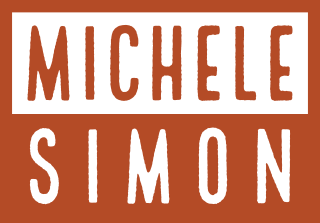Did Upside Foods Deceive FDA to Gain Approval?
Bloomberg reveals troubling details about biotech chicken
It’s been a rough few months for Upside Foods, as reporters are finally asking deeper questions about the BS technology of cell cultured meat. In September, I wrote about how Wired exposed that employees joked the company was the “next Theranos”, a comparison that I made in January.
The latest damning expose comes from Bloomberg’s Businessweek, diligently reported by Deena Shanker and Priya Anand, and entitled: “The Biggest Problem With Lab-Grown Chicken Is Growing the Chicken” and subtitled, “Venture-backed startups such as Upside Foods have promised cultivated chicken as the solution to the meat problem. If only the solution made sense.”
It never made sense, and it’s making less and less sense every day. Upside Foods is backed by an incredible $600 million in VC funds, along with endless free PR from the nonprofit, the Good Food Institute.
The lengthy Businessweek feature contains numerous important threads, but for now, I want to focus on one of the more disturbing aspects: what Upside Foods told the U.S. Food and Drug Administration in its application for government approval.
Upside Foods received its “no further questions” letter from FDA in November, 2022, which meant the agency accepted the company’s own claims that its biotech chicken was safe to eat. Of course, corporate PR went into overdrive, overstating the regulatory move, referring to it everywhere as getting a “green light” from FDA. (The company subsequently received USDA approval, as both are required.)
It seems others do have “further questions” about the company’s claims.
Bloomberg spoke with several former employees who disputed the methods that Upside Foods claimed to be using in its FDA submission. One such ex-employee, Samir Qurashi, even filed a formal complaint to FDA, referring to Upside Foods’ submission as “the most embarrassing ‘scientific’ manuscript in the history of modern technological innovation.”
While the scientific details are complicated, they boil down to two issues: the types of cells used and the methods deployed to grow the cells.
The only place where Upside Foods is selling its biotech chicken is at the upscale San Francisco restaurant Bar Crenn, thanks to an arrangement with the chef, Dominique Crenn.
There are various types of cells used to create biotech chicken. It appears that what Upside Foods told FDA differs from what they are actually selling to Bar Crenn. In response to pointed questions from Bloomberg, Upside Foods acknowledged that the biotech chicken at Bar Crenn does not contain myoblasts, or muscle cells, despite the company telling FDA that it did contains such cells.
The other issue is the two different methods for growing the cells into something resembling meat. All over the media, Upside Foods has been touting its shiny, massive bioreactors giving everyone from the impression that its biotech chicken is made in these high-tech vessels. But as Wired reported in September, in fact, Upside is using an old-fashioned method with single-use plastic bottles. A lot of them.
Bloomberg sums up the process of creating the Bar Crenn chicken bites:
The company is growing them in small, single-use plastic bottles, in amounts so piddling that a single night at Bar Crenn, a “certified plastic-free” establishment, according to its website, could require the use of more than a hundred such bottles, says Qurashi and others familiar with the process. The chicken doesn’t even include immortalized cells; it’s made of primary fibroblast cells that at some point will stop replicating and at best grow only into connective tissue. This means that to make more chicken, scientists will eventually have to go back to an embryo and remove more cells, a process that, even when it works, also kills the embryo.
Doesn’t sound very sustainable, especially for a restaurant claiming to “work closely with all of our vendors to educate them on their use of plastics and their impact on the planet.” Do Crenn’s customers know what they are eating, and how it’s made? The chef apparently had no comment for Bloomberg.
Upside Foods admits to no wrongdoing, telling Bloomberg that they did include both methods in their FDA submission. Moreover, the company claims, the FDA dossier was written solely as a safety assessment and “should not be used to evaluate the state of our manufacturing capabilities.”
Say what?
How else is FDA to evaluate Upside Foods’ claims of safety unless the company is accurately describes HOW they make the food they are claiming is safe?
Let’s simplify things shall we?
If a dairy farmer can get milk two ways, either by hand or machine, FDA will want to know WHICH method that farmer is using to accurately evaluate claims of safety. The farmer cannot submit both methods, knowing they are only using the manual method, while hoping its machines start to work someday.
Let’s hope FDA starts asking more questions. I know I have a lot of them.
